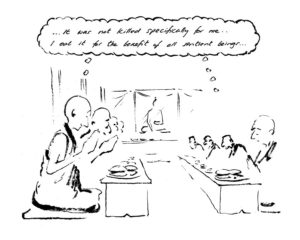Definition of the Week (45): Omniscient Knowledge
Jetsun Chokyi Gyaltsan:
A pristine wisdom gone beyond that realizes directly the ten dharmas of bodhicitta and so forth. Omniscient knowledge is mutually inclusive with buddha’s consciousness.
Each aspect of a buddhas mind is omniscient, knowing all aspects of the two truths directly and simultaneously. It is free from duality with regard to its object of emptiness, and at the same time dualistic with regard to the illusory objects of the worlds.
Lama Tsong Khapa reg. dharma kaya: The final result, which is endowed with a variety of uncontaminated aspects, born from having meditated on the trainings.
From the Two Truths:
Because it is the body of all dharmas,
And because it is the basis of all qualities, beyond thought.
It follows logic and is entity,
And hence is the dharma kaya of the rescuer.
Since “body” is an accumulation, the “dharma kaya” is called an “accumulation of dharmas”, because the name of the result is applied to the cause.
If one thinks, “Why is it seen here only as the cause?”, the reason is that it is the basis for all qualities, both worldly and those gone beyond.
Since it is like this, the word “dharma” is used for inference, and the word “kaya” is used for the nature.
Lama Tsong Khapa here refers to the resultant state as a whole as dharmakaya, which includes all four bodies. The omniscient consciousness is one of them.


